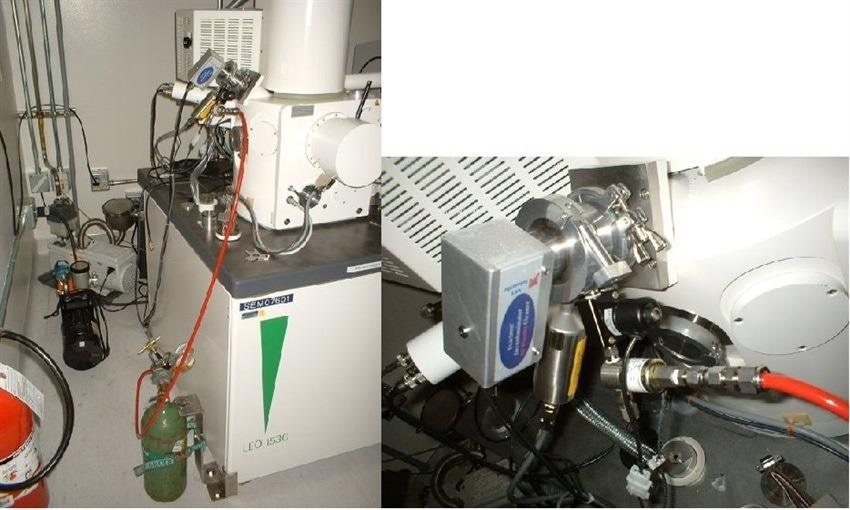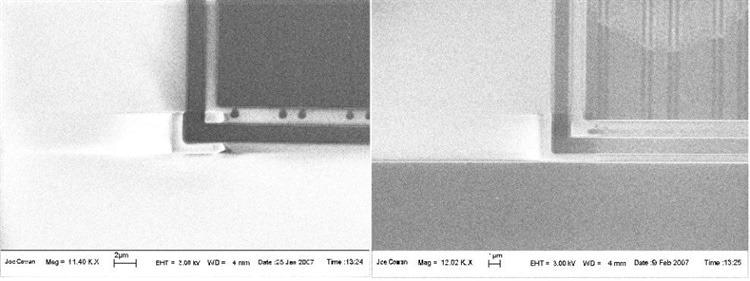Previously, the optimum use of SEM implied baking of one’s column and being careful to wear gloves while dealing with samples. However, with a reduction in feature sizes, this may not be sufficient.
Accumulation of hydrocarbon in SEM vacuum chambers can lead to less than perfect resolution. The electron beam tends to react with contamination and deposit carbon on the sample, leading to charging and degrading of image contrast.
Oxygen plasma is conventionally used for cleaning surfaces in a vacuum. O2 is disintegrated into oxygen ions and radicals, which efficiently eliminates organic contaminants.
Low Energy Plasma Cleaners
Low energy plasma cleaners made by various manufacturers have the ability to draw oxygen radicals and ions out of 'thin air.' This might resemble 'snake oil' but it does work well. The method may be too slow but it really works, needs very little configuration and is user-friendly. A 'dirty' system will require days or even weeks of preliminary cleaning.
The Evactron® De-Contaminator was altered to use welding-grade oxygen. The analysis executed indicates that there are a day and night comparison for effectiveness and speed. In contrast to using ambient air for several weeks, one or two 4-hour sessions with oxygen were found to be more effective.

Figure 1. Oxygen tank attached to Evactron Decontaminator low energy plasma cleaner. Red tubing connects the bottle/regulator to the intake port of the Evactron. Image Credit: Evactron (XEI Scientific)

Figure 2. Before (left) and after (right) 4 hours of chamber cleaning with oxygen plasma. Image Credit: Evactron (XEI Scientific)
Working Principle
Plasma functions by converting gas atoms into ions and radicals. High frequency magnetic fields are used to oscillate gas atoms into a frenzy, thus breaking bonds and discharging a luminescent glow. Further, the ions and radicals execute all the work.
Oxygen radicals and ions are highly efficient as cleaning agents. While performing the cleaning process, the oxygen gas ions and radicals tend to react with the hydrocarbons inside the SEM. Such reactions produce H2O, CO and CO2, which are then removed from the system with the help of vacuum pumps.
The use of air as the process gas leads to the formation of nitrogen ions besides oxygen ions and radicals. Nitrogen ions add to the cleaning process and further recombine with oxygen ions and radicals.
But there is a lower likelihood of lasting oxygen reactive species. This is because air is filled with 70% nitrogen.
When their lifetime decreases, their mean free path also decreases, which makes cleaning farther away from the plasma less probable. When oxygen is used as the process gas, there is no predatory nitrogen that can be gained along the path. With less restriction for oxygen ions and radicals, they can move farther and clean in a better way.
Conclusion
It is fascinating to know how a low-energy plasma system can be modified to work with oxygen. A trip to a welding supply store fetched a regulator and an O2 bottle. XEI Scientific was ready to start with some tubing and a few fittings.
When the regulator is in place, the bottle is unlocked and the regulator is barely opened to produce a persistent wisp of oxygen flow. As soon as the tubing is fixed to the plasma system’s leak port, it is all set to work.
References
- Neal Sullivan, et al., Microscopy and Microanalysis, 2002.
- T.C. Isabell and P.E. Fischione, Plasma Science, 1998.
- http://en.wikipedia.org/wiki/Plasma_cleaning

This information has been sourced, reviewed and adapted from materials provided by XEI Scientific.
For more information on this source, please visit XEI Scientific.